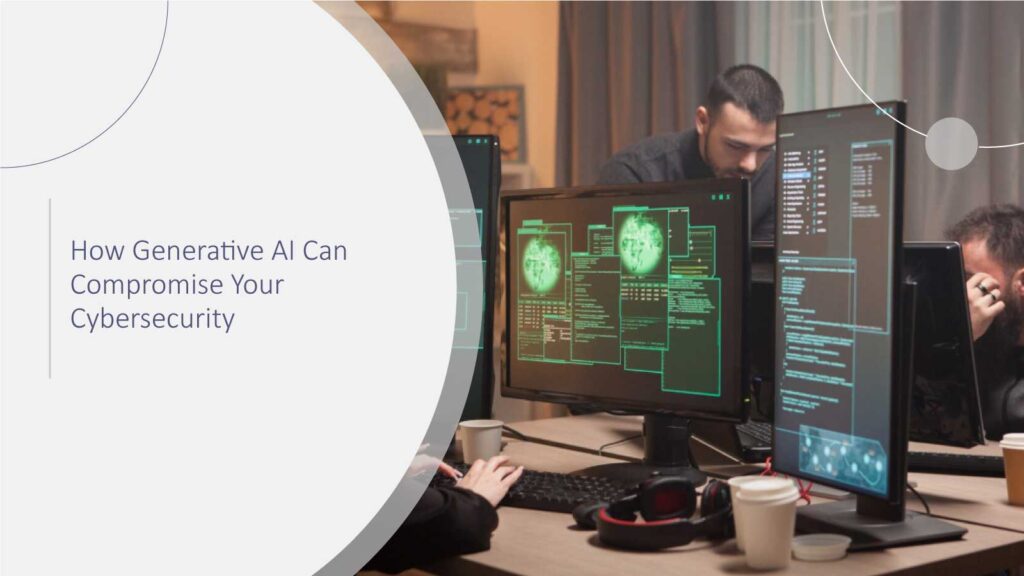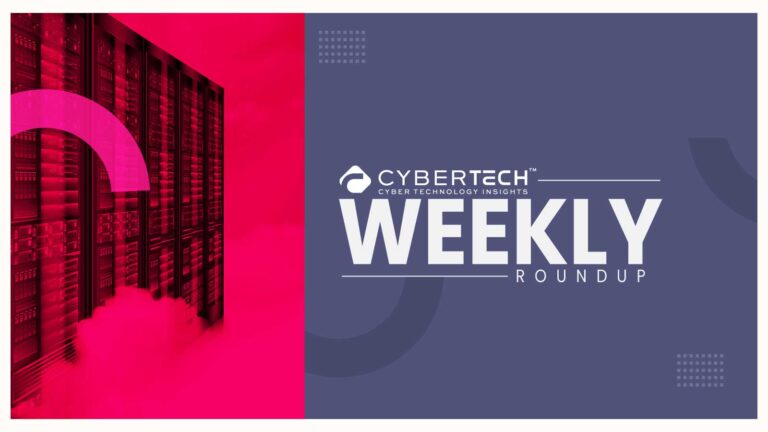Generative AI has rapidly transitioned from a sci-fi scenario to a commonly used tool by big companies. Corporations utilize it to create the first draft of their reports, generate designs, automate their processes, and even to have conversations with clients. The fact that it can produce very similar to human text, accurate images, or examples of coding is almost revolutionary. However, as the disposal of enterprise systems gets deeper with AI, a critical question still lingers: can these powerful tools unintentionally weaken cybersecurity? The response is yes, and organizations that want to innovate safely should comprehend the hazards associated with the issue.
Generative AI: A Double-Edged Sword
Generative AI can create content that looks like human-made one, which is its main feature. The same, however, is a downside of its characteristics. Cybercriminals are already taking advantage of this capacity to write very believable phishing messages, create deepfake videos, and develop malicious code. In comparison to regular cyber threats, AI-enhanced cyberattacks are quicker, more automated, and more difficult to unveil.
E.g., hacking of a phishing e-mail may be performed by simply putting in a few facts into an AI model and creating an email that is similar to that of a CEO or IT administrator. Together with AI-driven automation, assailants can distribute these types of campaigns swiftly and widely. Thus, while an attack that required humans to do it in the past is now human-independent, and effort is minimized.
Key Cybersecurity Risks of Generative AI
Generative AI exposes new routes whereby bad actors could take advantage of system vulnerabilities. Here are the major security risks through which the use of Generative AI can affect the safety of individuals:
1. AI-Powered Phishing and Social Engineering
One of the major technologies that hackers use to make their scams more believable is AI-based text generation. This instrument is able to thoroughly research the victim and tailor the strike specifically to it, by copying the linguistic style, tone, and even the email pattern, which increases the likelihood of the target trusting it and interacting with it. As cited by the World Economic Forum, AI-targeted attacks become more and more problematic issues for security teams, as 47% of businesses report that it is one of their main concerns. Gartner predicts that by 2026, 32% of phishing attacks will leverage generative AI, up from less than 5% in 2023.
2. Model Manipulation and Data Poisoning
Performers can sabotage an AI model by adding a prompt that gives wrong information or by messing up the training data. This “poisoning” can result in the AI system making wrong decisions, leaking sensitive data, or producing outputs that unintentionally cause security breaches. To give an example, if the dataset used for a generative AI project to help automate paperwork is manipulated, the AI will be releasing private client information without even realizing it. Forrester found that 52% of IT leaders fear data poisoning attacks on AI models could disrupt critical business operations within the next two years.
3. Deepfakes and Fraud
By utilizing AI technology, attackers may produce very lifelike videos and voice recordings with which they can pretend to be executives or clients. This method has already been implemented in financial scams where the perpetrators have been able to fool the employees into making the money transfers. Deloitte research shows that 60% of executives believe deepfake fraud will become a top cybersecurity threat in the next three years. As a result of generative AI, the perpetrators will be able to carry out these assaults on a larger scale and with never-before-seen levels of sophistication.
4. Automated Malware Creation
The assistance of generative AI in coding is such that, if hackers get their hands on this technology, they will be able to develop malware a lot faster. On one side, AI can elevate software development to a higher level of efficiency; conversely, the platform can also be utilized for illegal purposes, in which case, the technology serves as a smoking gun in the hands of less skilled hackers, allowing them to easily create malicious scripts and hack vulnerabilities. McKinsey notes that AI-assisted malware creation could reduce attack development time by 70%, enabling less skilled attackers to exploit vulnerabilities rapidly.
Why Enterprises Are Especially Vulnerable
To be able to compete, AI is usually adopted in a fast manner, and the organizations will, in many cases,n ot take the time to fully evaluate the security implications. According to a 2025 survey by EY, 92% of technology leaders intended to increase AI-related expenditures; however, only 37% had formalized any processes for assessing AI security before implementation.
This danger is even greater for smaller businesses. As stated by Accenture, almost 70% of small and medium-sized enterprises (SMEs) have poorly secured AI with weak protocols, so that they are prone to attacks that could be easily automated and scaled with the help of generative AI technology. There is also a risk of large enterprises, when the AI models that work across different networks interact without any oversight, which is then followed by a chain reaction of possible hacking.
Implementing Security-First AI Strategies
One way to enjoy the benefits of generative AI without ending up with a disaster is for companies to take up a security-first, proactive approach. Below are a few such strategies:
Embed Security in AI Development Pipelines
Security is not an option of the highest priority in case of breaches. One has to secure the coding procedures, use absolutely secure datasets, and conduct the so-called adversarial testing to guarantee that the models are resistant to hacking attempts.
Continuously Monitor AI Systems
The properties of AI models are not fixed but rather dynamic. Regular checking ensures that the models stay truthful, trustworthy, and not easily manipulated. Such an activity also reveals any departure from regularity, which may hint at interference or illegal use.
Integrate Cyber Resilience Across Systems
Security done through isolation creates vulnerabilities. Merging the security at the deepest level of the hardware, network layer, cloud security, and AI under one umbrella can cut the risk of backdoors and, at the same time, increase the overall resilience.
Educate Employees
Even the most sophisticated AI systems cannot operate without human assistance. Training employees to identify phishing attempts that utilize AI or that consist of suspicious communications will make the human firewall, which is a complement to the technological security system, much stronger.
Real-World Implications
For example, think of a company that uses AI to do financial reporting automatically. If there is no proper control, a hacker could trick the AI with deceptive prompts so it reroutes sensitive information or simply produces reports that contain private data exposed. The effects could be simply counted as losing money, going against regulatory rules, or damaging the company’s image.
On the contrary, AI solutions in customer service, such as chatbots or virtual assistants,m ight become sources of data leakage or footholds for hackers if there is no security in place. Because AI technology can be amplified both in terms of speed and dependencies, an insignificant fault is likely to become very big quickly, so implementing security measures before any attacks is a must.
Balancing Innovation and Security
In general, AI-generative should not be considered as one of the major threats to mankind. Its positive aspect shows the following qualities: efficaciousness, innovativeness, and creativeness, among others. Although so, these companies must recognize that the good does not come for free. Security for AI should not be treated just as an IT issue, but it is a strategic move that requires interaction among the different subsidiaries, cybersecurity teams, and AI developers.
Consider it like this: would you install a high-performance engine in a car without brakes? The same logic applies to generative AI. It is too big a gamble that no organization should take to simply allow security to be the last issue to be addressed, and continue operating without security. Gartner predicts that by 2027, 80% of enterprises leveraging generative AI will require a formal AI security framework to meet regulatory and operational standards.
Conclusion
Generative AI is rapidly changing the workforce; it is amplifying human productivity to an almost unimaginable level. Besides that, the AI technologies bring to the labor market not only the traditional but also new and faster productivity growth. Additionally, the era of AI has opened up new avenues for creativity and innovation in traditionally creative fields. However, all these achievements come with new and different types of cybersecurity concerns that cannot be ignored. Organizations that prioritize security-centered AI investments, constantly monitor the model for its integrity, and are prepared for the common scenarios of resilience, will not only be in a position to minimize the threats but will also unlock the potential of AI.
On the contrary, the need for cybersecurity, as part of the AI strategic plan, is nnoanymore an option in the digital-first world but rather an indispensable element for innovation that lasts. The key is in the interplay: being mindful of the omnipotent torch that AI is, yet at the same time, putting the firewall there wherever it goes.
FAQs
1. Is generative AI capable of creating cybersecurity threats without human help?
Yes. Similar to AI models, the data they are trained on can heavily influence them, and if they are not sufficiently secured, hackers can take control of them to produce harmful content or to facilitate the processes of phishing and fraud.
2. In what ways do deepfakes contribute to cybersecurity risks?
Deepfakes can disguise themselves as management, power, or officials, and mislead the victim into authorizing illegal transactions or giving them valuable data.
3. What is the concept of AI model manipulation, and why is it a threat?
The manner in which an AI model is attacked is through the provision of biased prompts or the modification of the training data, which subsequently results in AI systems making the wrong decision or leaking private information.
4. What methods can be used by organizations to protect generative AI setups?
One way to do this is to design security AI projects, always keep a close eye on models, take necessary steps to protect oneself from attacks, and train the workforce to identify abnormal outputs.
5. Are smaller businesses more exposed to AI-related cyber threats than larger ones?
Yes. The majority of small businesses lack proper AI security systems and are, therefore, easy targets for hackers who use generative AI technology in their criminal activities.
For deeper insights on agentic AI governance, identity controls, and real‑world breach data, visit Cyber Tech Insights.
To participate in upcoming interviews, please reach out to our CyberTech Media Room at sudipto@intentamplify.com.






